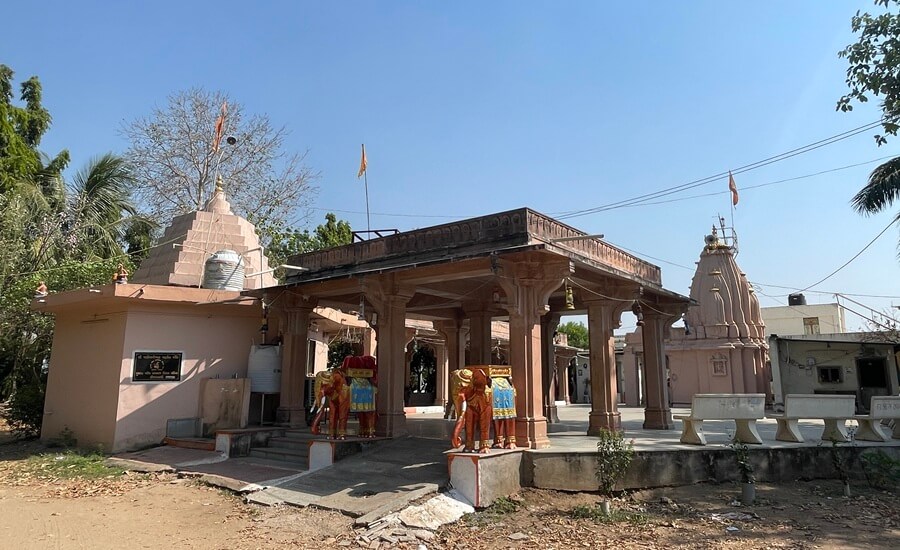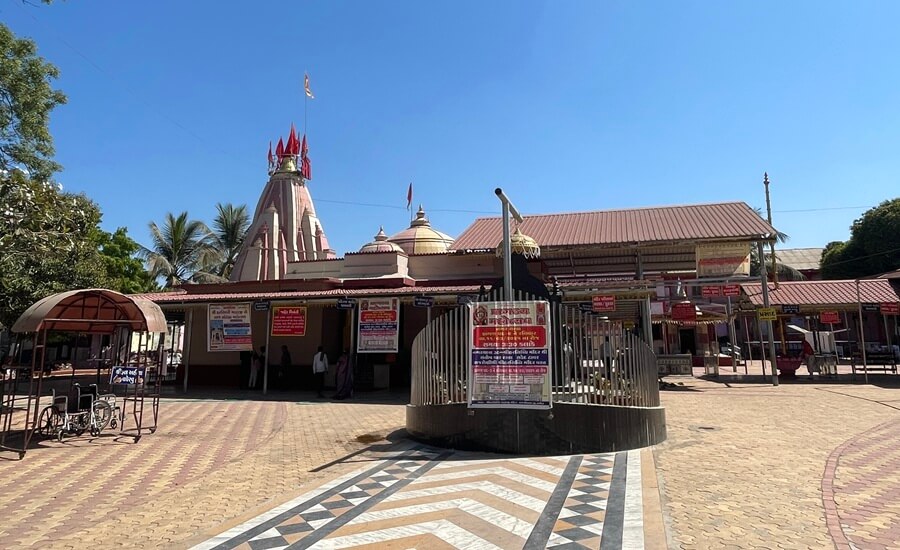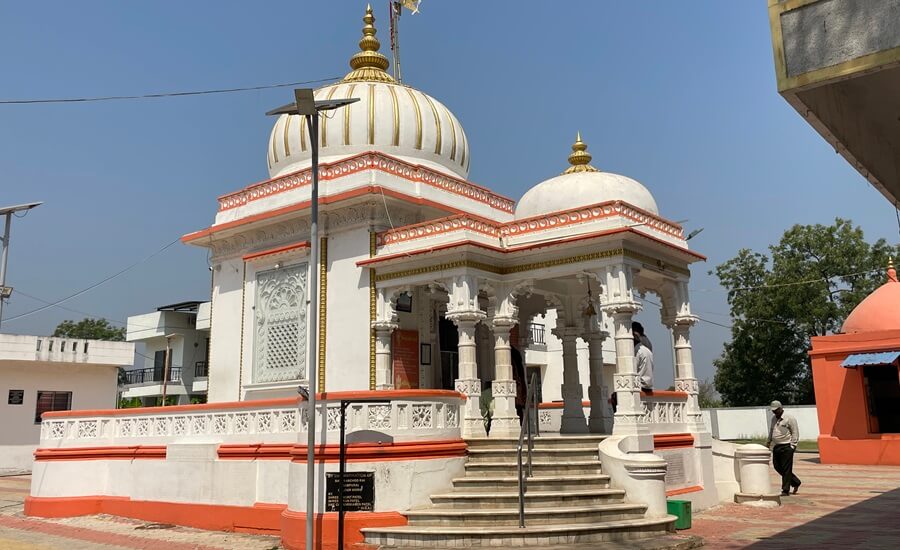
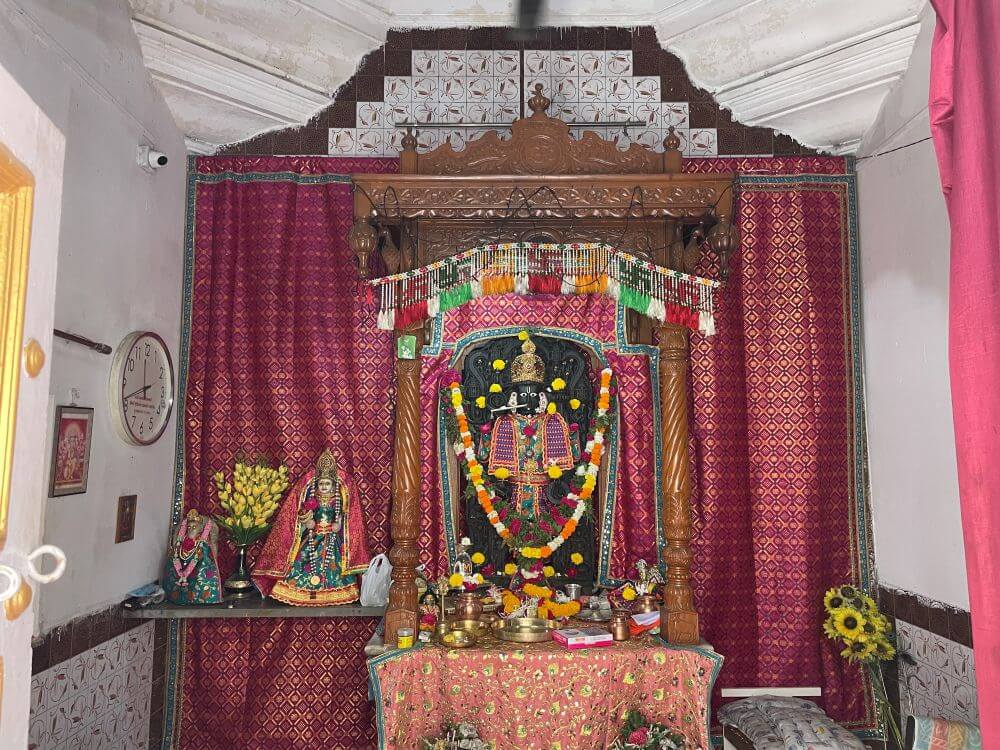
Lord Krishna, renowned for defeating mighty kings and demons like Kansa, was once compelled to retreat strategically to avoid war. This tactical withdrawal led him to be called ‘Ranchhod’, meaning ‘one who fled from battle’. Many temples across India are dedicated to Krishna under this name. One such notable temple is located at Rampura on the Uttarvahini Narmada Parikrama (circumambulation) route. The specialty of the idol here is that it incorporates depictions of Krishna’s Dashavatar (ten incarnations). Numerous devotees undertaking the Narmada Parikrama visit this temple for blessings.
Rampura holds significant religious importance in the Uttarvahini Narmada Parikrama. 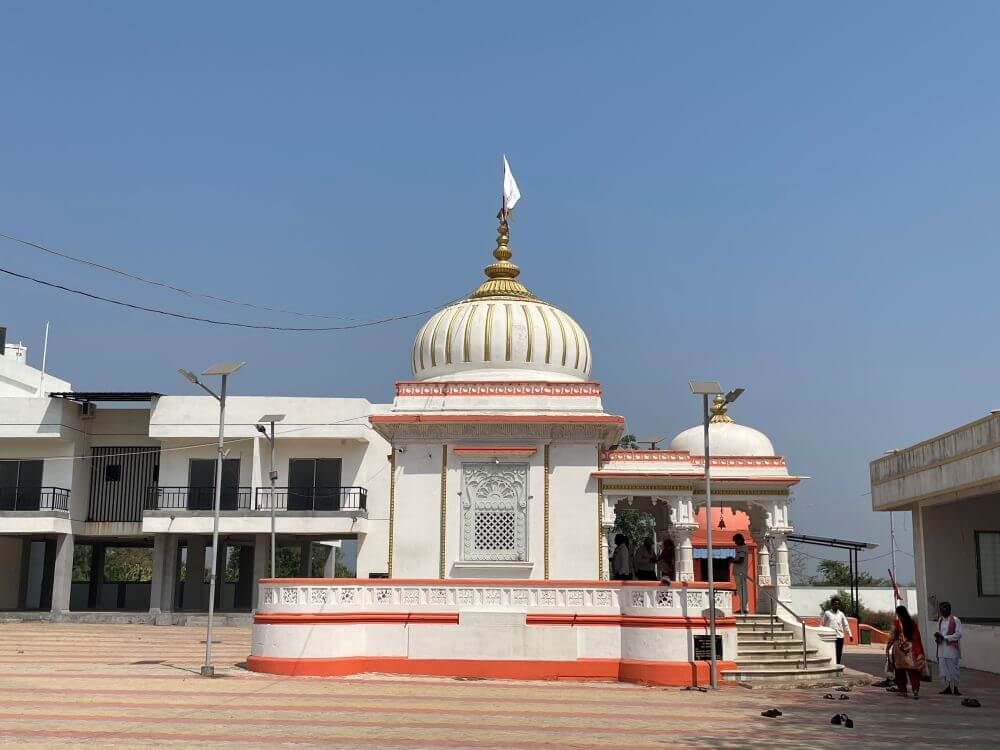 Sage Markandeya initiated this pilgrimage thousands of years ago, and devotees continue to complete this approximately 3,500 km circuit. However, for some, walking such a distance may be impossible. Thus, an alternative route called the Uttarvahini Parikrama is conducted during the month of Chaitra, covering about 21 km from Tilakwada to Rampura and back. The Narmada River uniquely turns northward (Uttarvahini) at Tilakwada and continues in this direction until Rampura, after which it resumes its usual course, thus making Rampura sacred.
Sage Markandeya initiated this pilgrimage thousands of years ago, and devotees continue to complete this approximately 3,500 km circuit. However, for some, walking such a distance may be impossible. Thus, an alternative route called the Uttarvahini Parikrama is conducted during the month of Chaitra, covering about 21 km from Tilakwada to Rampura and back. The Narmada River uniquely turns northward (Uttarvahini) at Tilakwada and continues in this direction until Rampura, after which it resumes its usual course, thus making Rampura sacred.
The legend of Ranchhodray states that King Jarasandha of Magadha was a powerful and cruel ruler who was also Kansa’s father-in-law. Jarasandha was notorious for his brutality. In the Sabha Parva of Mahabharata, Krishna mentions that – ‘षडशीतिः समानीताः शेषा राजंश्चतुर्दश । जरासंधेन राजानस्ततः क्रूरं प्रवर्त्स्यते ।।’ 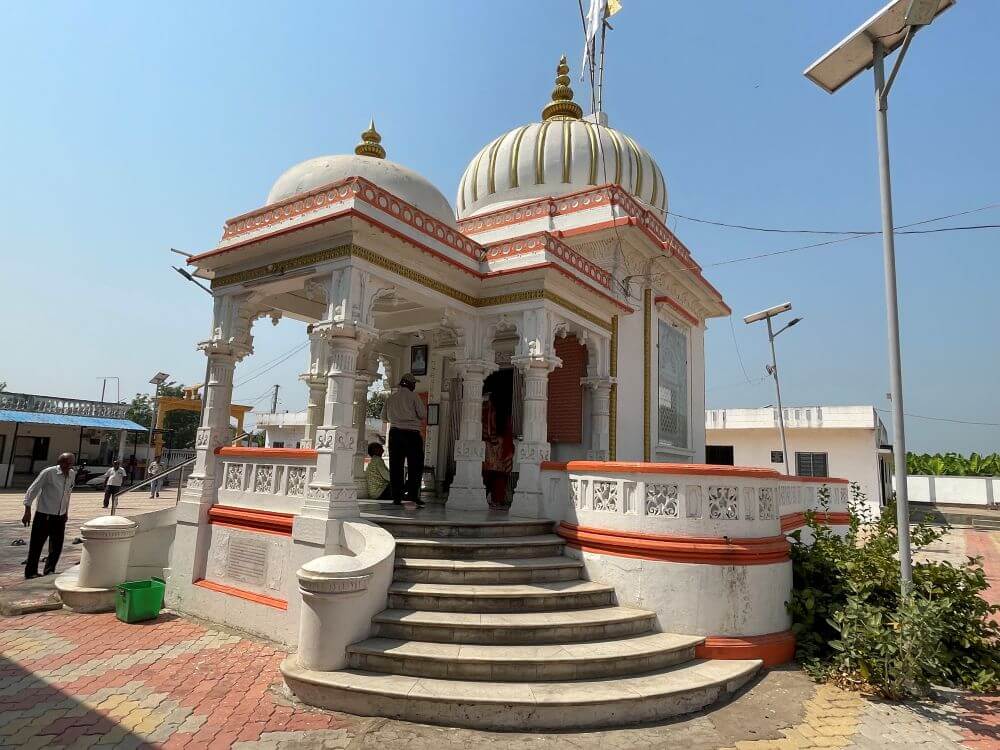 (ṣaḍaśītiḥ samānītāḥ śeṣā rājaṃś caturdaśa | jarāsaṃdhena rājānastataḥ krūraṃ pravartsyate |) It means, Jarasandha has captured 86 of 100 regional kings. Only 14 (percent) kings remained free. If he captured them too, his cruelty would escalate further. Angered by Kansa’s death at Krishna’s hands, Jarasandha attacked Mathura 18 times. Although no decisive victory was achieved in these battles, Mathura suffered greatly. Ultimately, for the welfare of his people, Krishna decided to abandon Mathura and migrated with the Yadava clans – Vrisnis, Andhakas, and Bhojas – to Dwarka. This act of leaving the battlefield earned him the name Ranchhod; however, it was done for the greater good of his subjects.
(ṣaḍaśītiḥ samānītāḥ śeṣā rājaṃś caturdaśa | jarāsaṃdhena rājānastataḥ krūraṃ pravartsyate |) It means, Jarasandha has captured 86 of 100 regional kings. Only 14 (percent) kings remained free. If he captured them too, his cruelty would escalate further. Angered by Kansa’s death at Krishna’s hands, Jarasandha attacked Mathura 18 times. Although no decisive victory was achieved in these battles, Mathura suffered greatly. Ultimately, for the welfare of his people, Krishna decided to abandon Mathura and migrated with the Yadava clans – Vrisnis, Andhakas, and Bhojas – to Dwarka. This act of leaving the battlefield earned him the name Ranchhod; however, it was done for the greater good of his subjects.
The temple dedicated to Ranchhodray in Rampura has a history spanning over a hundred years.  According to local lore about the idol here, it was discovered by a farmer in his field on August 5, 1913, during Shravana Shuddha Chaturthi. The villagers began to worship this idol and later decided to build a temple for Ranchhodray. They collected donations for this purpose but could not gather enough funds initially. The then-king of Rajpipla State, Maharaja Vijay Singh, contributed the remaining amount necessary to construct a grand temple. The temple was completed in his ninth year of reign. On February 28, 1923, amidst the turmoil of the ‘Borsad Satyagraha’ against unjust taxes imposed by the British under Sardar Vallabhbhai Patel’s leadership, a formal consecration ceremony for Ranchhodray’s idol took place.
According to local lore about the idol here, it was discovered by a farmer in his field on August 5, 1913, during Shravana Shuddha Chaturthi. The villagers began to worship this idol and later decided to build a temple for Ranchhodray. They collected donations for this purpose but could not gather enough funds initially. The then-king of Rajpipla State, Maharaja Vijay Singh, contributed the remaining amount necessary to construct a grand temple. The temple was completed in his ninth year of reign. On February 28, 1923, amidst the turmoil of the ‘Borsad Satyagraha’ against unjust taxes imposed by the British under Sardar Vallabhbhai Patel’s leadership, a formal consecration ceremony for Ranchhodray’s idol took place.
Set along the Narmada river-bank, the temple occupies a vast courtyard entered via a large gateway constructed in 2002. The courtyard features attractive paved blocks leading to a marble temple of Ranchhodrai on a raised platform. The structure comprises an open viewing area (darshan mandap) and a sanctum sanctorum (garbhagriha) topped with dome-shaped shikharas adorned with an amalaka and kalasha (pot). A circumambulation path leads around from the viewing area.
The pillars supporting the viewing area are circular and intricately carved with attractive designs connected by arches. 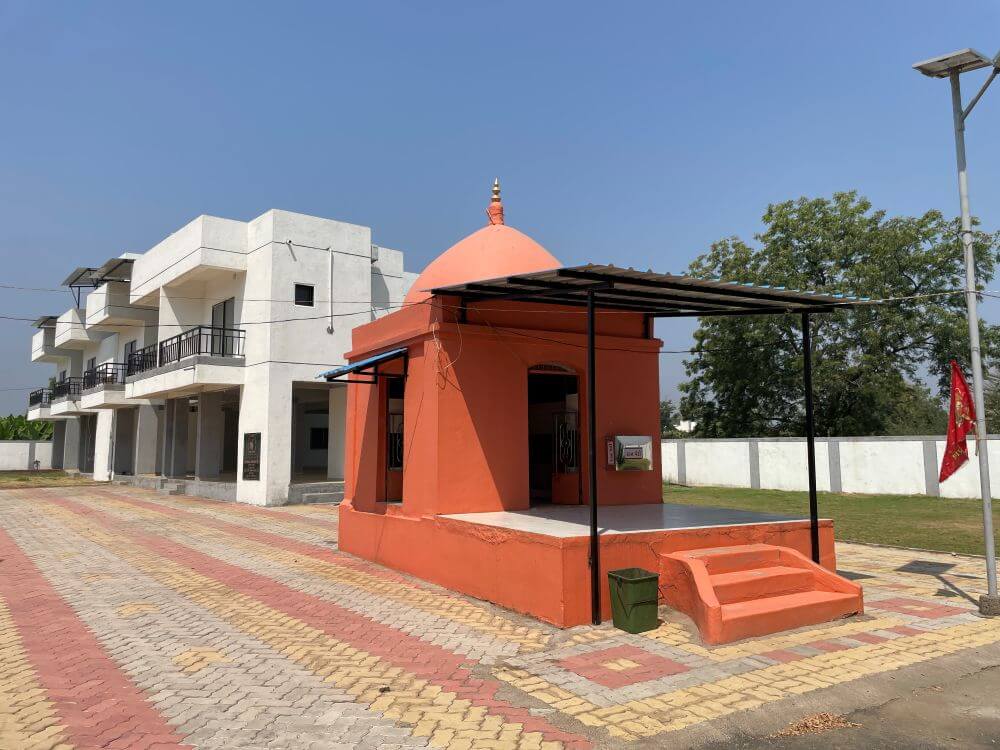 The doorframe leading into the sanctum also features beautiful carvings. Inside rests a stunning idol of Ranchhodray carved from black marble standing four feet tall.
The doorframe leading into the sanctum also features beautiful carvings. Inside rests a stunning idol of Ranchhodray carved from black marble standing four feet tall.
The idol depicts Krishna with a gentle smile, adorned with a crown, ornaments, and Vaijayanti mala (garland). The idol holds a lotus, mace (Gada), Panchajanya conch, and Sudarshan Chakra in its four hands, while a flute rests at its lips. Near the feet is Garuda. Around the idol are symbolic human forms representing Krishna’s divine weapons : the lotus, conch, Kamodaki gada (the mace held by Vishnu), and chakra. Behind the idol, small carvings of Dashavatar appear on the back slab, flanked by miniature depictions of Vishnu and Shiva.
Not far from this temple lies another site believed to be where Ranchhodray manifested himself. This smaller temple houses sacred sandals (Padukas) placed on a pedestal. Additionally, there are temples dedicated to Mahadev as well as Hanuman and Ganesh within the temple complex.
The Gujarat government’s ‘Pavitra Yatra Dham Vikas Board’ has developed facilities around Dashavatara Ranchhodray Temple area. A large assembly hall for devotees is planned for construction here in 2024.
